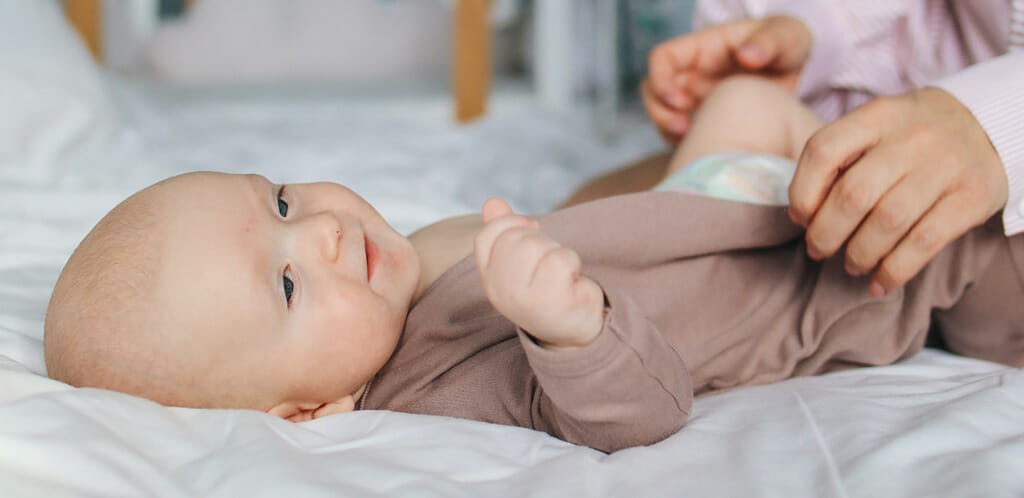
“Sleep, little baby, sleep…” is the sound of many parents dreams when putting baby to sleep in the cot. But what happens when the “little dream” doesn’t really work out and mum or dad shake the baby out of sheer desperation? In counselling, even as an expert, you are confronted with stressful issues from time to time. A parents’ intuitive ability to soothe their own baby can be negatively influenced from the outside. This can be the case, for example, through prolonged sleep deprivation, general exhaustion, postpartum depression, traumatic birth experiences, loss events or even a crying baby. It is estimated that between 100 and 200 children are admitted to German hospitals with shaking trauma every year. Experts assume that the number of unreported cases is high. Therefore, when working with parents, it is also important to be vigilant and to react promptly in case of a case.
What causes parents to shake their baby
We have other articles on baby sleep in detail in our Expert Tips of the Month. Parents can learn a lot about the child’s sleep development, how they can support their little ones through co-regulation and which sleep aids they can use. In the above-mentioned stressful situations, however, communication between parents and child, and thus also co-regulation by the parents, functions only to a limited extent. The baby is therefore no longer able to adequately control its own behaviour according to the cognitive, emotional and social demands in certain situations. Often this is exacerbated when the baby has more needs than one would actually expect.
Dr. William Sears, Professor of Paediatrics, coined the term high-need babies for this. He uses it to describe those babies who need particularly intensive care, who are hyperactive, demanding, constantly awake, unhappy, unpredictable and over-sensitive. They are perceived as stressful because they need to be fed constantly, cannot be put down or cannot be separated. Such factors can influence the interplay between parental support and child self-regulation to such an extent that it leads to regulatory disorders, such as excessive crying, sleep and feeding disorders, constant restlessness, dysphoria with a reluctance to play, excessive clinging and defiance, social anxiety or persistent separation anxiety. In short, the baby fails to cope with age-typical crises and the parents increasingly reach their breaking point.
According to a study from the USA, about 16 to 29 percent of all babies suffer from excessive crying attacks in the first three months. This carries the risk that parents will eventually feel overwhelmed, lose their temper and shake their child. What does this mean in practice? It is a massive, violent and violent shaking back and forth of the child held by the upper arms or chest (first described in 1970). And this can lead to a shaking trauma called “shaken baby syndrome” (SBS).

What happens in shaken baby syndrome
Abuse-related head injuries, which primarily include shaking trauma, are the most common non-natural cause of death in infants and young children. 10 to 30 per cent of babies die as a result of shaking trauma, and 50 to 70 per cent survive this event with lifelong physical or mental disabilities and seizure disorders. The uncontrolled shaking causes the baby’s comparatively heavy and still very fluid-rich brain to shift. This can tear veins that connect the brain tissue to the majora. Bleeding occurs between the cerebral cortex and the brain. The impact causes bruising and contusions, which leads to oedema. This leads to swelling, water retention and haemorrhaging, which results in irreparable destruction of cell tissue and can lead to death.
How to recognise a shaking trauma
Common symptoms are: Weakness in drinking, drowsiness, restlessness, apathy, epileptic seizures, vomiting, cardiac arrhythmias, breathing disorders, apnoea, visual and speech disorders, pallor, irritability, developmental delays, disabilities, bruises, haematomas.
The diagnosis is often made very late, so carers around the family should be vigilant. In addition, the diagnosis is often complicated by the fact that the parents do not provide any information about the preceding event. However, if there are any abnormalities, go to the hospital immediately!
The following methods can be used for diagnosis:
- Sonography of the brain and spinal cord in case of suspected shaking trauma, in order to diagnose haematomas in this area.
- MRI and/or CT diagnostics
- A diagnosis is often made on the basis of three observations:
- Haemorrhages and fluid accumulation between the cortex and the brain
- Bleeding in the retina of the eye
- No evidence of external injuries and lack of clear explanations from the parents as to the possible cause
The fact is: shaking a baby constitutes child abuse. Therefore, it makes sense to inform parents about the causes, triggers and consequences in any case, also in postpartum care as a midwife or course leader or also in early childhood counselling.
In one of the next episodes of our Expert Tip of the Month, we will give parents a few more tips to help them when they get into an overwhelming situation. This can then also help in a parent counselling session!



